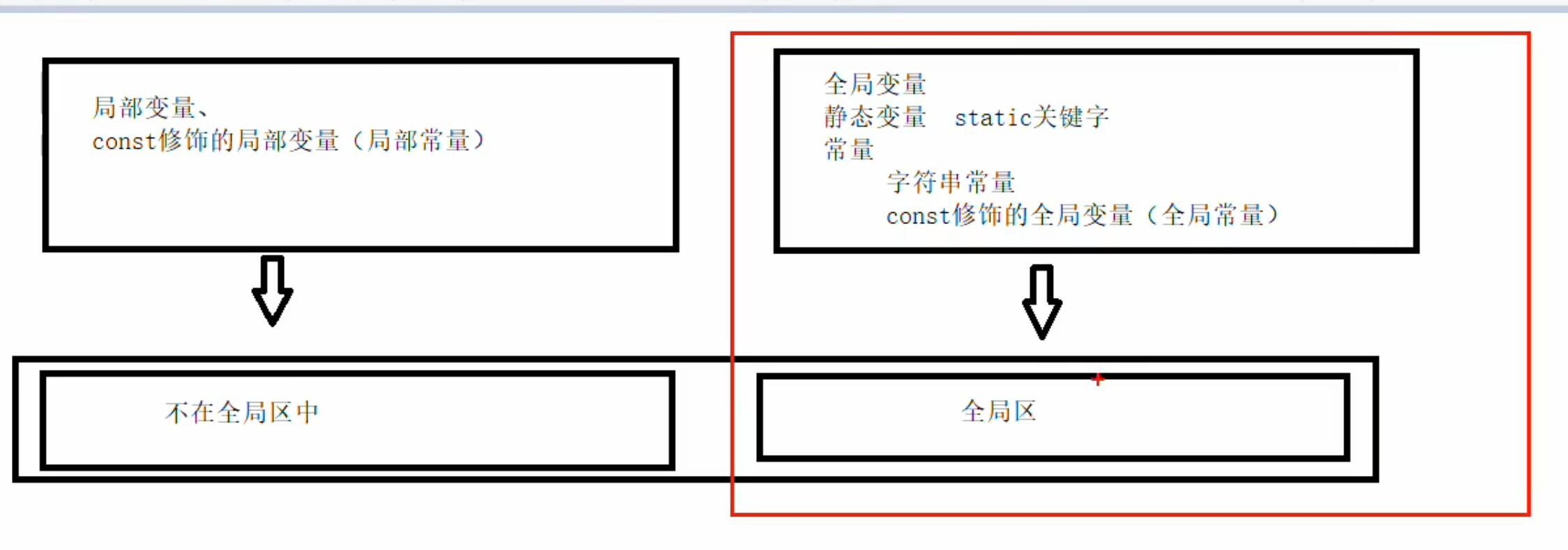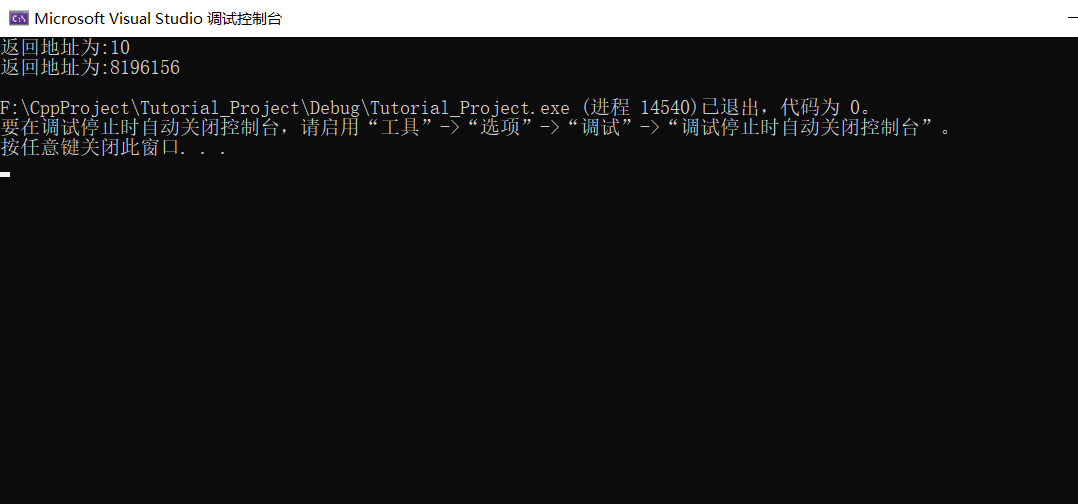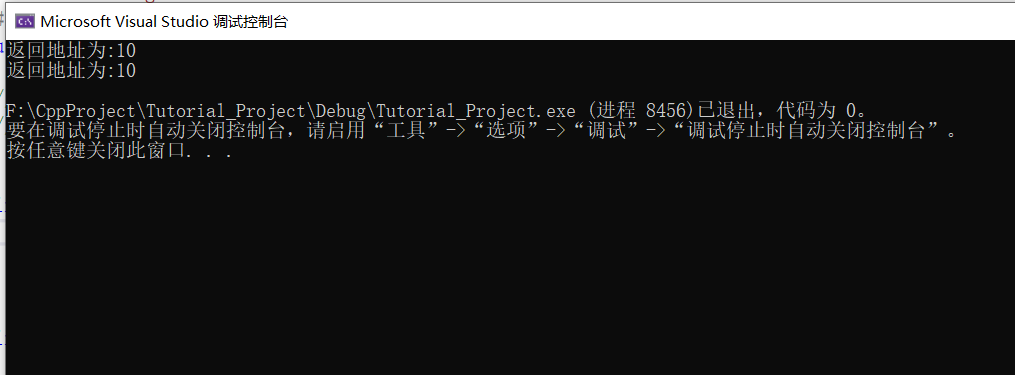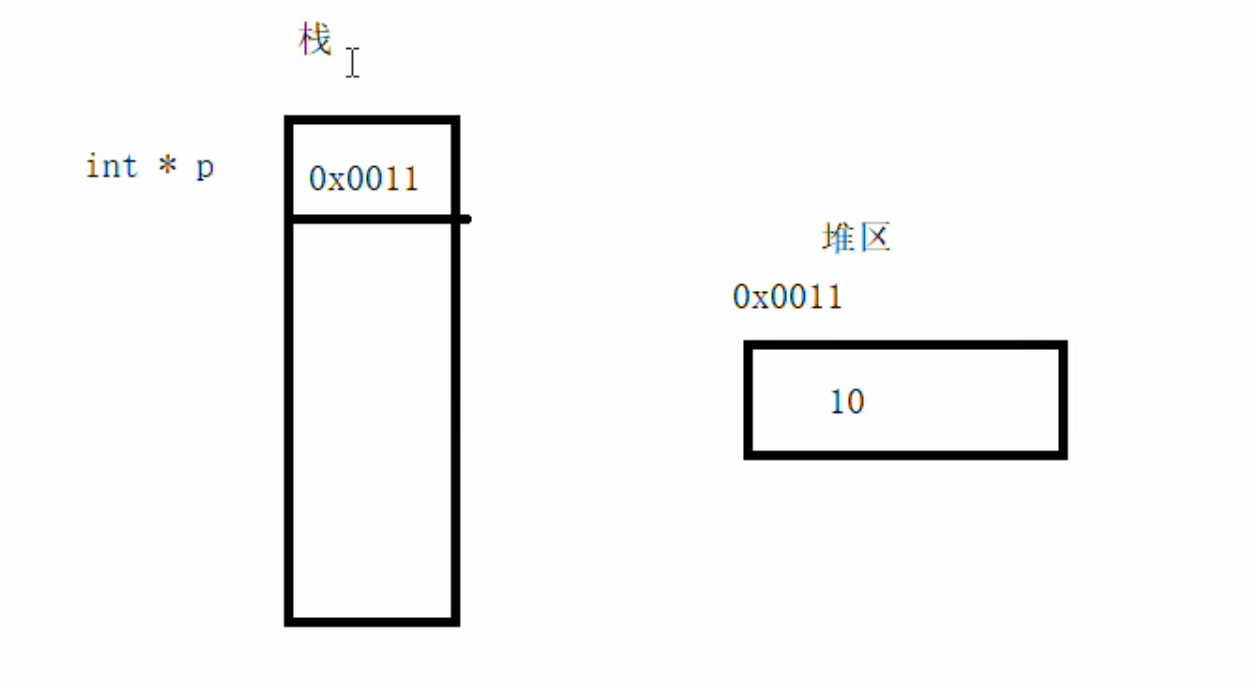1.内存分区模型 C++程序在执行时,将内存大方向划分为4个区域
代码区:存放函数体的二进制代码,由操作系统进行管理
全局区:存放全局变量和静态变量以及常量
栈区:由编译器自动分配释放,存放函数的参数值、局部变量等
堆区:有程序员分配和释放,若程序员不释放,程序结束时候由操作系统回收
不同区存放数据会赋予不同的生命周期。
1.1程序运行前 在程序编译后,生成了exe可执行程序,未执行该程序前分为两个区域:代码区和全局区。
代码区: 存放CPU执行的机器指令。代码区是共享的,共享的目的是对于频繁被执行的程序,只需要在内存中有一份代码即可。代码区是只读的,使其只读的原因是防止程序意外地修改了它的指令
全局区: 全局变量和静态变量存放在此,全局区还包含了常亮区,字符串常量和其他常量也存放在此。该区域的数据在程序结束后由操作系统释放。
#include <iostream> #include <string> #include <ctime> using namespace std ;int g_a = 10 ;int g_b = 10 ;const int c_g_a = 10 ;const int c_g_b = 10 ;int main () int a = 10 ; int b = 10 ; cout << "局部变量a的地址为:" << (int )&a << endl ; cout << "局部变量b的地址为:" << (int )&b << endl ; cout << "全局变量a的地址为:" << (int )&g_a << endl ; cout << "全局变量b的地址为:" << (int )&g_b << endl ; static int s_a = 10 ; static int s_b = 10 ; cout << "静态变量s_a的地址为:" << (int )&s_a << endl ; cout << "静态变量s_b的地址为:" << (int )&s_b << endl ; cout << "字符串常量的的地址为:" << (int )&"hello world" << endl ; cout << "全局常量 c_g_a的地址:" << (int )&c_g_a << endl ; cout << "全局常量 c_g_b的地址:" << (int )&c_g_b << endl ; const int c_l_a = 10 ; const int c_l_b = 10 ; cout << "局部常量 c_l_a的地址:" << (int )&c_l_a << endl ; cout << "局部常量 c_l_b的地址:" << (int )&c_l_b << endl ; }
总结:
C++中在程序运行前分为全局区和代码区
代码区特点共享、只读
全局区中存放全局变量、静态变量、常量
常量区中存放const修饰的全局常量和字符串常量
1.2程序运行后 栈区: 由编译器自动分配释放,存放函数的参数值,局部变量等。注意事项:不要返回局部变量的地址,栈区开辟的数据有编译器自动释放。
示例:
#include <iostream> #include <string> #include <ctime> using namespace std ;int * func (int b) b = 100 ; int a = 10 ; return &a; } int main () int * p = func(10 ); cout << "返回地址为:" <<*p << endl ; cout << "返回地址为:" << *p << endl ; }
堆区: 由程序员分配释放,若程序员不释放,程序运行完后操作系统回收,在C++中主要使用new在堆区开辟内存
#include <iostream> #include <string> #include <ctime> using namespace std ;int * func (int b) int * a = new int (10 ); return a; } int main () int * p = func(10 ); cout << "返回地址为:" << *p << endl ; cout << "返回地址为:" << *p << endl ; }
1.3new操作符 C++中利用new操作符在堆区开辟数据
堆区开辟的数据,有程序员手动开辟,手动释放,释放使用delete
语法: new 数据类型
利用new创建的数据,会返回该数据对应类型的指针
示例1
#include <iostream> #include <string> #include <ctime> using namespace std ;int * func () int *p=new int (10 ); return p; } void test01 () int * p = func(); cout << *p << endl ; cout << *p << endl ; cout << *p << endl ; delete p; } void test02 () int *arr=new int [10 ]; for (int i = 0 ; i < 10 ; i++) { arr[i] = i + 100 ; } for (int i = 0 ; i < 10 ; i++) { cout << arr[i] << endl ; } delete []arr; } int main () test02(); }




